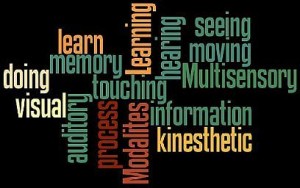Orton-Gillingham is a research-based instructional method developed in the early 20th century by Samuel T. Orton, a neuropsychiatrist, and Anna Gillingham, a gifted educator and psychologist. Dr. Orton developed a set of teaching principles and practices to work with children that exhibited the kind of language processing difficulties that are now associated with dyslexia. Anna Gillingham took these techniques and combined them with her analysis of the structure of the language and developed a method of teaching children with specific disabilities in reading and spelling.
Orton-Gillingham is a very effective approach to reading instruction that can dramatically improve decoding, fluency, comprehension, vocabulary and spelling. Students are taught all the levels of the language including phonemic and phonological awareness, the fundamentals of word formation, rules and generalizations, syllable types and syllable division, advanced word attack and morphology. The unique features that make this method so powerful are:
- Multi-sensory
- Individualized/flexible/diagnostic
- Explicit
- Structured, sequential and cumulative
- Synthetic and Analytic
- Cognitive
A multi-sensory approach is achieved by the simultaneous use of the auditory, visual and kinesthetic input channels in order to reinforce learning and to achieve maximum retention and retrieval by providing multiple “triggers” for memory. Teaching spelling along with reading is a crucial part of multi-sensory learning.
An individualized approach is used for each and every student. Some students require additional repetition of concepts or different techniques to achieve the same level of mastery. The teacher is always operating in a flexible or diagnostic mode to determine the appropriate pace and teaching strategies to use with each student. All of the concepts taught are reviewed until a student demonstrates mastery. This is achieved by the teacher creating individualized lesson plans as well as spontaneously modifying the lesson plan, as needed, while it is being delivered.
Each and every concept is taught explicitly. Students who struggle with the written language do not intuit the elements of language as others do. Every sound-symbol correspondence and every rule that governs our language is taught directly and explicitly, as needed, and practiced to mastery before removing it from review.
An assessment is administered to each student to determine the appropriate level to begin instruction. The language is taught by first introducing the simplest elements, as needed, and then progressing forward systematically. The advanced language structure is taught by introducing the syllable types, affixes and roots. Rules are taught at each level where appropriate. All of this is done in a structured, sequential and cumulative fashion with previously taught material reviewed as new material is learned in order to achieve automaticity. Vocabulary, sentence structure, composition, and reading comprehension are taught in a similar structured, sequential, and cumulative manner.
Synthetic and analytic techniques are taught at the onset of instruction and reinforced at all times. When spelling, a student is taught how to segment a simpler word into its phonograms and a longer word into its syllables. When reading, the student is taught how to blend individual phonograms and syllables together.
Rather than being taught to memorize whole words, students are taught to apply their knowledge (cognitive thinking) of the language structure as well as the history of the language when reading and spelling.
All of these techniques applied during an Orton-Gillingham lesson allow a student to always be working at their challenge level and to enjoy a high degree of success during every session. This boosts their confidence and self-esteem and makes learning a rewarding and enjoyable experience.

